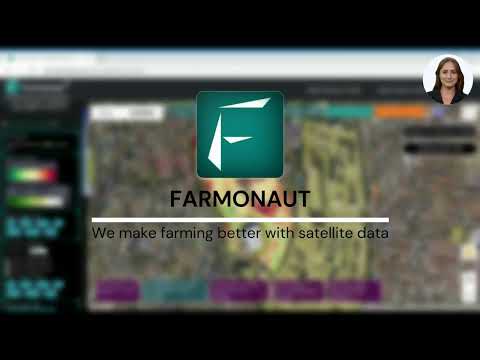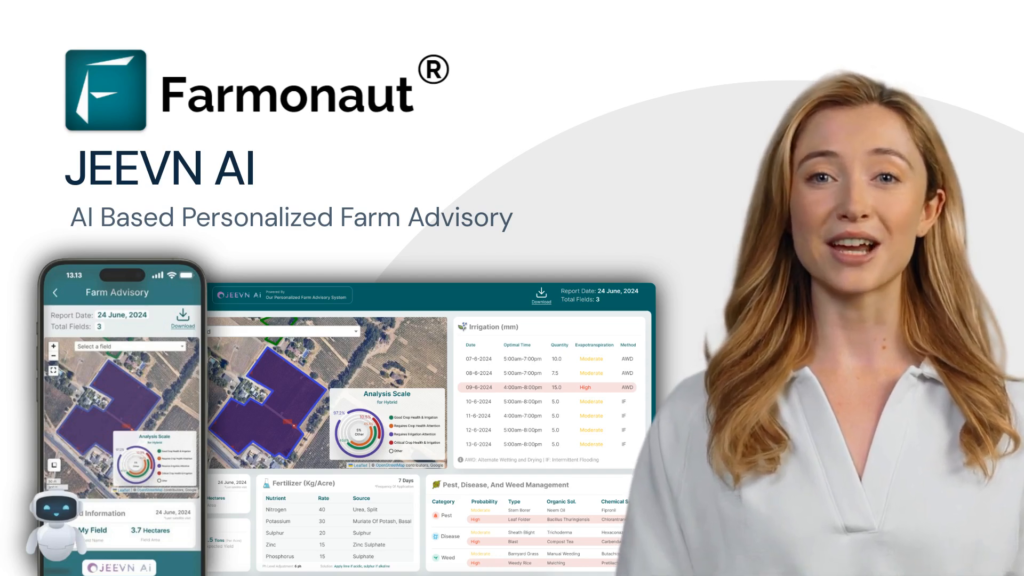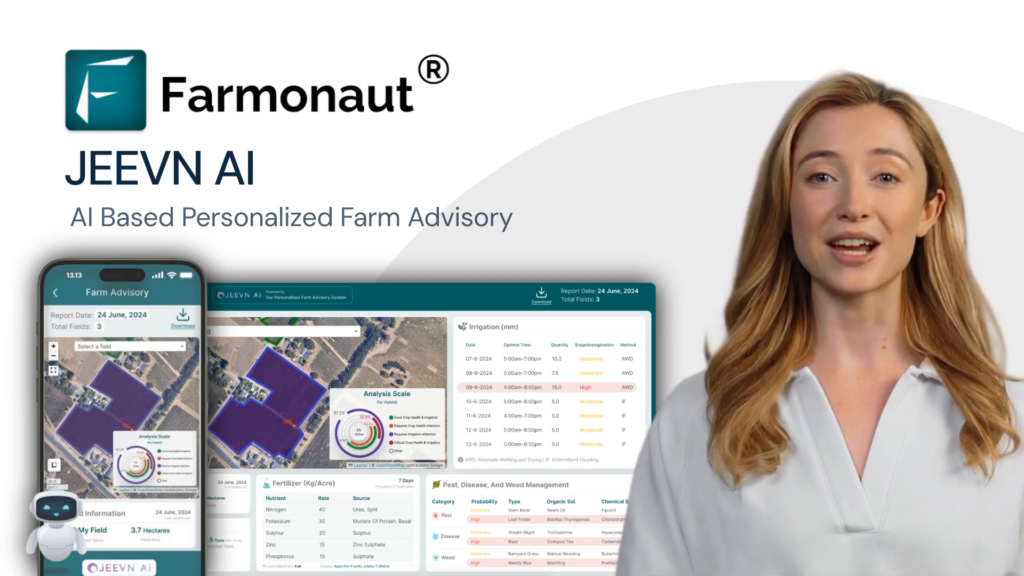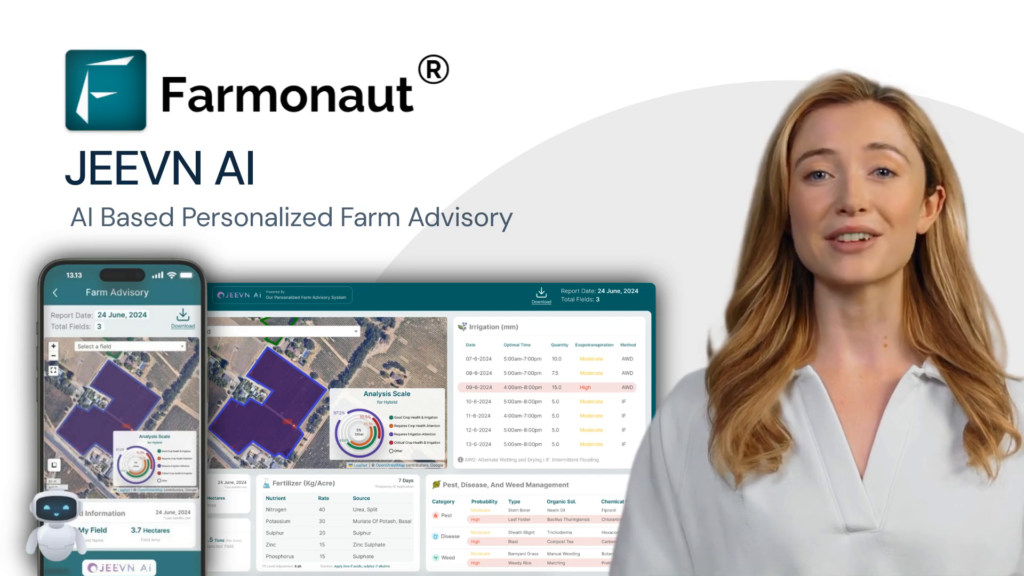Farmonaut’s Guide: Navigating Environmental Challenges in San Gabriel Valley’s Hazardous Waste Management
“EPA’s 30-day deadline for removing hazardous substances from wildfire burn areas impacts over 100,000 San Gabriel Valley residents.”
Welcome to Farmonaut’s comprehensive guide on navigating the environmental challenges faced by the San Gabriel Valley community in Los Angeles, California. As experts in agricultural technology and environmental monitoring, we at Farmonaut understand the critical importance of proper hazardous waste management and its impact on local communities. In this blog post, we’ll delve into the recent controversy surrounding the Environmental Protection Agency’s (EPA) decision to designate Lario Park in Irwindale as a hazardous waste processing site for wildfire cleanup operations.
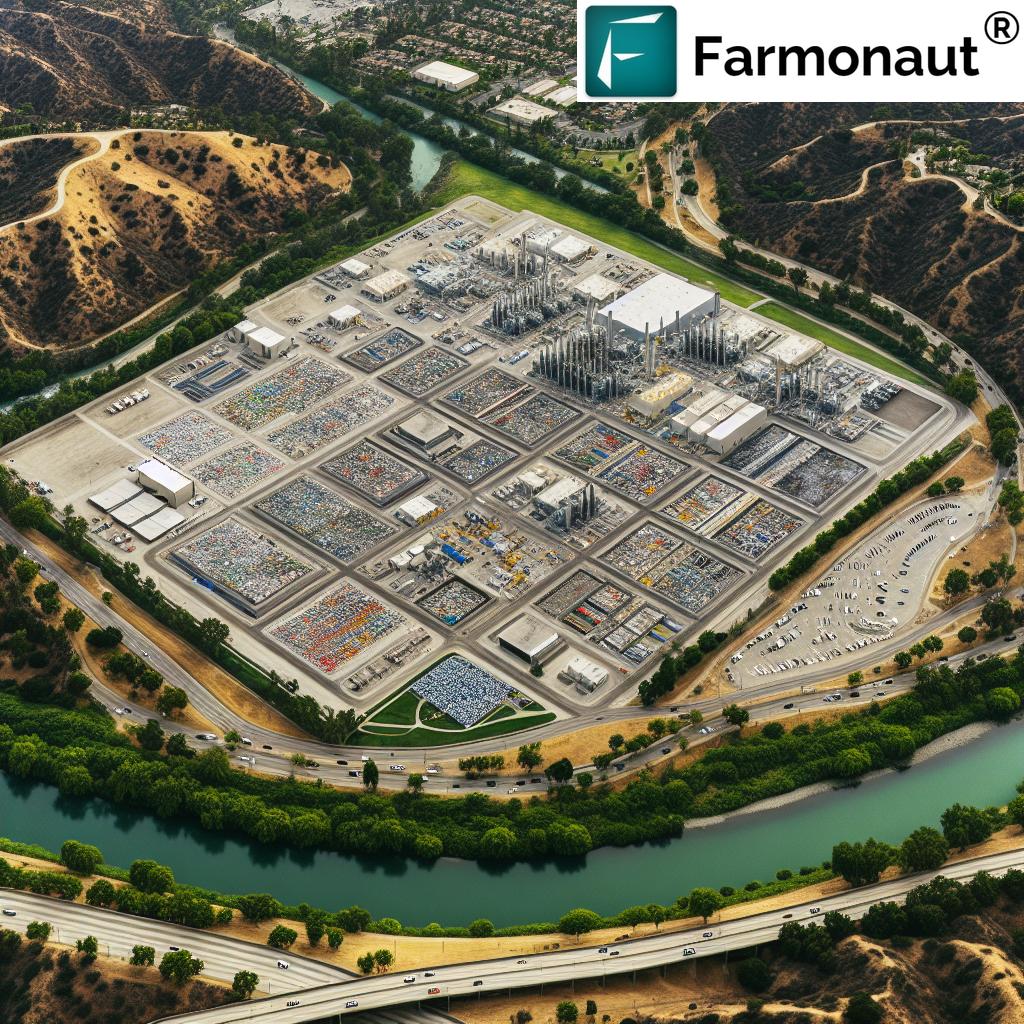
The San Gabriel Valley environmental concerns have sparked a heated debate between local residents and government agencies. This situation highlights the delicate balance between environmental management and public health, emphasizing the need for transparent communication and community engagement in environmental decision-making processes.
The Controversy Unfolds: Community Meeting on Toxic Waste
A recent contentious community meeting in Los Angeles revealed growing concerns over the hazardous waste processing site in San Gabriel Valley. Residents expressed outrage at the EPA’s decision to designate Lario Park in Irwindale for storing and sorting toxic materials from recent wildfire cleanup operations. The community’s frustration stemmed from a lack of prior consultation and fears about potential health risks near recreational areas.
- Residents learned about the site designation through news reports
- The site, previously under Los Angeles County parks department, is now used for hazardous material storage and sorting
- Materials include asbestos, lithium-ion batteries, and household chemicals
State Senator Susan Rubio voiced concerns about toxic chemicals potentially leaching into the environment. The community’s anxiety was particularly focused on the implications of hazardous waste being located near a recreational area frequented by families and children along the San Gabriel River trail.
EPA Waste Management Controversy: Safety Protocols and Community Skepticism
Despite assurances from the EPA and California’s toxic substance officials regarding safety measures, the audience’s mistrust led to heated interruptions and calls to relocate the waste processing to a safer site. Officials attempted to alleviate fears but struggled to satisfy residents.
Key safety protocols highlighted by officials include:
- Air quality monitoring
- Dust control measures
- Rigorous containment procedures
However, skepticism persisted regarding the site’s proximity to schools and the San Gabriel River trail. Questions about the comfort of sending children to schools near such a site drew pointed responses about the seriousness of hazardous waste management, indicating the officials’ confidence in their safety protocols.
At Farmonaut, we understand the importance of environmental monitoring and safety. While our focus is on agricultural technology, our satellite-based monitoring systems and AI-driven analytics can be adapted to support environmental management efforts. Learn more about our advanced monitoring solutions on our web app.
Urgency of Wildfire Cleanup Operations
The EPA’s 30-day deadline to remove hazardous materials from both the Eaton and Palisades fire burn areas has added urgency to the cleanup efforts. This deadline, imposed by the White House, aims to address cleanliness and safety concerns in the aftermath of wildfires.
Tara Fitzgerald, the EPA’s incident commander, acknowledged the unprecedented scale of the cleanup, suggesting it may take less than six months but stressing the time constraints. Local officials repeatedly questioned the feasibility of extending this deadline or whether hazardous items could be diverted to another less contentious site, but Fitzgerald remained non-committal.
Site Selection and Environmental Safety Protocols
The EPA explained that Lario Park was chosen due to its size and availability. Other sites closer to the burn zone were not viable as they were already designated for emergency response efforts. As waste is processed on-site, it is methodically contained in layers of protection to mitigate any risk of exposure.
Environmental safety measures implemented at the site include:
- Rigorous air quality monitoring
- Comprehensive dust control procedures
- Multi-layered containment systems
- Strict protocols for handling and sorting hazardous materials
Despite these explanations, many community members remained unconvinced. Jennifer Roman from Duarte highlighted apprehensions about the waste being transported through various communities to the processing site. Questions surrounding trust in government agencies were prevalent, with residents feeling that they deserved more transparency regarding health and safety measures.
“Community concerns over hazardous waste site in Irwindale affect recreational access for 50,000+ annual visitors to Lario Park.”
Environmental Impact Assessment: Hazardous Waste Management in San Gabriel Valley
To provide a comprehensive overview of the potential environmental impacts associated with the hazardous waste processing site in Lario Park, Irwindale, we’ve compiled the following table:
| Environmental Factor | Potential Impact | Mitigation Measures | Community Concern Level | EPA Safety Rating (1-5) |
|---|---|---|---|---|
| Air Quality | Increased air pollution, dust particles | Air quality monitoring, dust control protocols | High | 4 |
| Water Quality | Potential groundwater contamination | Containment systems, regular water testing | High | 3 |
| Soil Contamination | Toxic substance leaching into soil | Multi-layered containment, soil testing | Medium | 4 |
| Noise Pollution | Increased noise from trucks and processing | Restricted operation hours, noise barriers | Medium | 3 |
| Wildlife Impact | Disturbance to local ecosystems | Habitat protection measures, wildlife monitoring | Low | 4 |
This table offers a structured summary of the environmental challenges and proposed solutions, enhancing understanding of the complex issue. It addresses key community concerns and official responses, providing valuable insight into the environmental management efforts in San Gabriel Valley.
Farmonaut’s Perspective on Environmental Monitoring
At Farmonaut, we specialize in satellite-based monitoring and AI-driven analytics for agricultural purposes. While our primary focus is on crop health and farm management, our technology has potential applications in environmental monitoring and management.
Our advanced satellite imagery analysis could potentially be adapted to:
- Monitor vegetation health in areas surrounding hazardous waste sites
- Track changes in land use and potential environmental impacts
- Provide real-time data on soil moisture levels, which could be crucial in monitoring potential contaminant spread
Learn more about our innovative technologies and how they could be applied to environmental monitoring:
Community Engagement and Environmental Decision-Making
The controversy surrounding the hazardous waste processing site in San Gabriel Valley highlights the critical importance of community engagement in environmental decision-making processes. The lack of prior consultation with residents led to increased mistrust and opposition to the EPA’s plans.
Key lessons for improving community engagement include:
- Early and transparent communication with affected communities
- Providing clear, accessible information about environmental safety measures
- Establishing channels for ongoing dialogue between officials and residents
- Incorporating community feedback into decision-making processes
By fostering open communication and involving communities in environmental management decisions, agencies can build trust and ensure that public health concerns are adequately addressed.
Balancing Environmental Management and Public Health
The situation in San Gabriel Valley exemplifies the delicate balance between environmental management needs and public health concerns. While the urgent cleanup of hazardous materials from wildfire-affected areas is crucial, it’s equally important to address the legitimate concerns of local communities.
Strategies for achieving this balance include:
- Conducting thorough environmental impact assessments
- Implementing robust safety protocols and monitoring systems
- Providing regular updates and transparent reporting to the community
- Exploring alternative sites or methods for hazardous waste processing
- Investing in long-term environmental remediation and community health programs
By adopting a holistic approach that considers both environmental and public health factors, agencies can work towards more sustainable and community-friendly solutions for hazardous waste management.
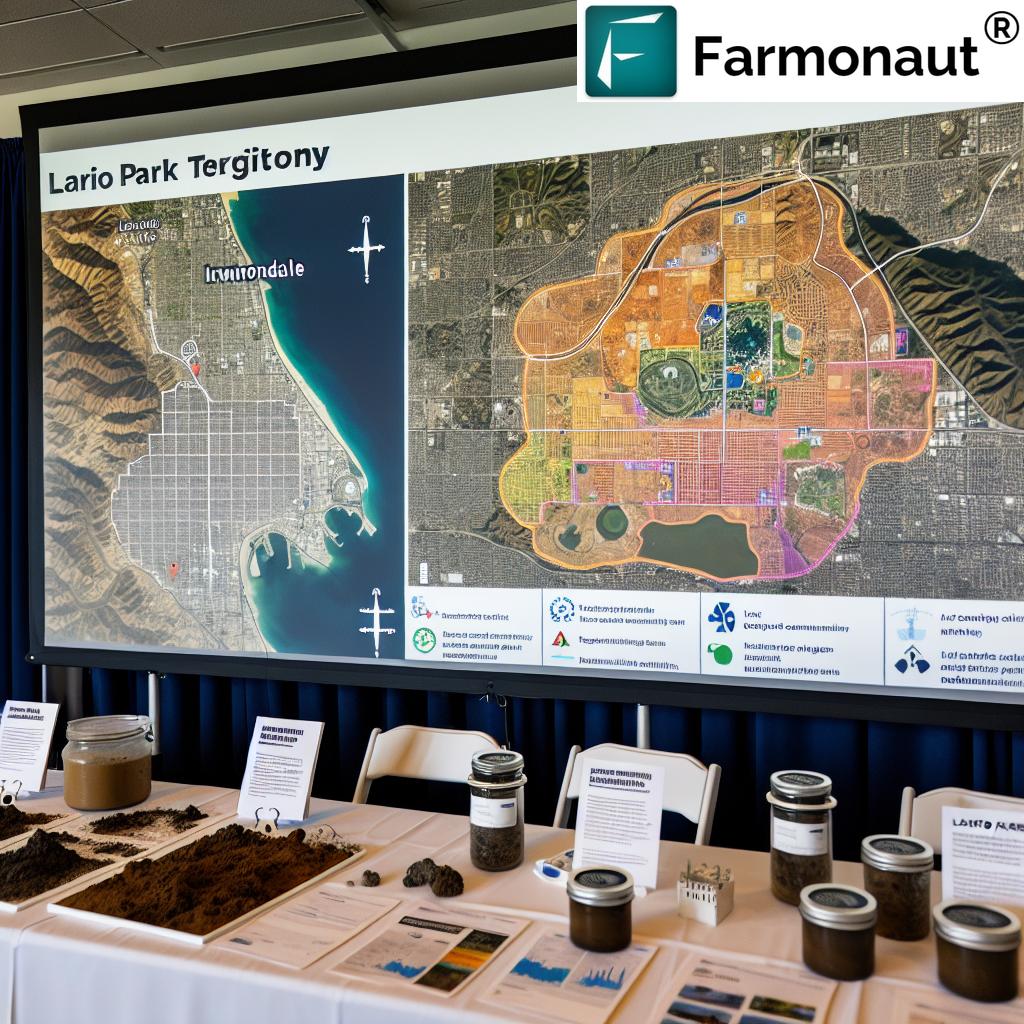
The Role of Technology in Environmental Monitoring
Advanced technology plays a crucial role in modern environmental monitoring and management. At Farmonaut, we understand the power of satellite imagery and AI-driven analytics in providing valuable insights for decision-making.
Potential applications of technology in hazardous waste management include:
- Real-time monitoring of air and water quality
- Automated detection of potential contamination using satellite imagery
- AI-powered predictive models for environmental impact assessment
- Blockchain-based traceability for hazardous material transport and processing
While our focus at Farmonaut is primarily on agricultural applications, many of our technologies have potential crossover benefits for environmental monitoring. Learn more about our innovative solutions:
Farmonaut API | API Developer Docs
Looking Ahead: Sustainable Solutions for Hazardous Waste Management
As we navigate the challenges of hazardous waste management in San Gabriel Valley and beyond, it’s crucial to focus on developing sustainable, long-term solutions. This includes:
- Investing in research and development of safer waste processing technologies
- Exploring alternatives to hazardous materials in consumer and industrial products
- Implementing comprehensive recycling and waste reduction programs
- Enhancing emergency response and cleanup protocols for natural disasters
- Fostering collaboration between government agencies, environmental experts, and local communities
By taking a proactive approach to hazardous waste management, we can work towards creating safer, healthier environments for communities while effectively addressing environmental challenges.
Conclusion: A Call for Collaborative Environmental Stewardship
The controversy surrounding the hazardous waste processing site in San Gabriel Valley serves as a stark reminder of the complex challenges we face in balancing environmental management with community health and safety. As we move forward, it’s crucial that all stakeholders – from government agencies and environmental experts to local residents – work together to find sustainable solutions.
At Farmonaut, while our primary focus is on agricultural technology, we recognize the interconnectedness of environmental issues. Our commitment to leveraging advanced technology for sustainable resource management aligns with the broader goals of environmental protection and community well-being.
We encourage ongoing dialogue, transparent communication, and the integration of cutting-edge technology in addressing environmental challenges. By fostering a collaborative approach to environmental stewardship, we can work towards creating safer, healthier, and more sustainable communities for generations to come.
Frequently Asked Questions (FAQ)
- What is the main concern regarding the hazardous waste processing site in Lario Park, Irwindale?
The main concern is the potential health risks associated with storing and processing hazardous materials near recreational areas and residential communities. - How is the EPA addressing community concerns about safety?
The EPA has implemented safety protocols including air quality monitoring, dust control measures, and multi-layered containment systems for hazardous materials. - Why was Lario Park chosen as the site for hazardous waste processing?
Lario Park was selected due to its size and availability. Other sites closer to the burn zone were already designated for emergency response efforts. - What types of hazardous materials are being processed at the site?
The site processes materials like asbestos, lithium-ion batteries, and household chemicals that cannot be disposed of in regular landfills. - How long is the hazardous waste processing expected to continue?
While the EPA has a 30-day deadline for removing hazardous substances from burn areas, the overall processing at Lario Park may take up to six months.
Farmonaut Subscriptions
Earn With Farmonaut
Earn 20% recurring commission with Farmonaut’s affiliate program by sharing your promo code and helping farmers save 10%. Onboard 10 Elite farmers monthly to earn a minimum of $148,000 annually—start now and grow your income!






